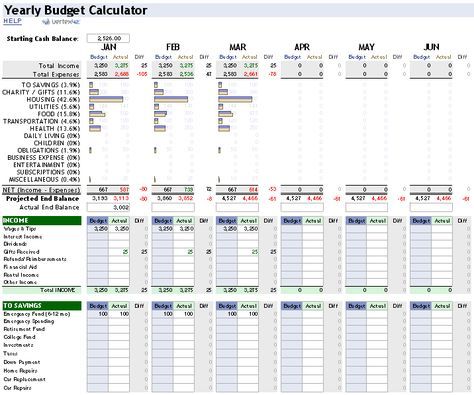
There are some strategies you can use to maximize your social security benefits. These strategies include working for at least 35 years and waiting until the benefit-phasing age to maximize your benefits. You might be interested in claiming spousal benefit if you are single.
35 Years of Work
Working longer will help you receive maximum Social Security benefits. The Social Security Administration will consider your highest year of earnings when calculating your benefit. This applies even if part-time employment is taken after full retirement age. You must also have at least 10 years of work covered. This means you have to have contributed to the system in those years. This equates to 40 credits.
However, if you want to maximize your benefits, you must work for 35 years. Even if the amount you earn now is more than what you will receive in the future it could be difficult to retire on top. Your benefit will be reduced if you don't work for 35 years. You can make up by working longer. Your salary will go up as you gain more experience.
Pay more in taxes
If you owe money, you can ask the government to withhold the taxes. This prevents you from having to pay a large tax bill in one lump sum. You can also request that your taxes be withheld from your income so you make quarterly payments. However, you must consult with a tax advisor to determine which option is best for your financial situation.

Many self-employed individuals make the error of minimising the tax they pay. This could limit your Social Security benefits. In addition, you may not realize it, but some states tax Social Security benefits.
Wait until benefit phase-out
To maximize your Social Security benefits, it is a good idea to wait for benefit phase-out if you are thinking about claiming them. This can help your heirs receive more income. An example: A wife with a high income can make sure her husband has a higher survivor payout than her. That extra income could make a difference of up to 32%.
Social Security Administration issues checks that are one month older than your actual age. You should apply for benefits at least one month before your birthday. For instance, if your birthday is in July, you should request that your benefits begin on July 17. If your birthday falls in July, however, you should ask that your benefits start in June.
Get spousal benefit if unmarried
People who aren't married and seeking to maximize Social Security benefits must understand the differences in personal and spousal benefit. Personal benefits are greater and more frequent, while spousal benefit are capped at full retirement. In order to get spousal benefits, you must be married for at least 10 years or be unmarried for two years and be at least 62 years old.
The spousal benefit is based on the amount the primary worker would get. The spousal amount can be significantly less than that of the primary employee. The spousal benefit does not reduce your monthly benefit, but is instead handled actuarially through the Social Security Administration.

Remarry after 60
You can keep your survivor benefits if you are married after age 60. You could lose your eligibility for benefits if the remarried occurs before this age. Your record as a spouse is what will determine your eligibility for survivors benefits.
If you are nearing retirement, remarrying might not be the best option. In fact, you should consider divorce instead. You should carefully plan your remarriage to maximize the benefits. For example, you may want to postpone the wedding to delay your Social Security claim.
FAQ
How to Beat Inflation with Savings
Inflation is the rising prices of goods or services as a result of increased demand and decreased supply. It has been a problem since the Industrial Revolution when people started saving money. The government regulates inflation by increasing interest rates, printing new currency (inflation). But, inflation can be stopped without you having to save any money.
For example, you can invest in foreign markets where inflation isn't nearly as big a factor. An alternative option is to make investments in precious metals. Gold and silver are two examples of "real" investments because their prices increase even though the dollar goes down. Investors who are worried about inflation will also benefit from precious metals.
What is risk management and investment management?
Risk management refers to the process of managing risk by evaluating possible losses and taking the appropriate steps to reduce those losses. It involves monitoring and controlling risk.
Any investment strategy must incorporate risk management. Risk management has two goals: to minimize the risk of losing investments and maximize the return.
The following are key elements to risk management:
-
Identifying risk sources
-
Monitoring and measuring the risk
-
How to reduce the risk
-
How to manage the risk
How old should I start wealth management?
Wealth Management can be best started when you're young enough not to feel overwhelmed by reality but still able to reap the benefits.
The sooner you begin investing, the more money you'll make over the course of your life.
If you are thinking of having children, it may be a good idea to start early.
You could find yourself living off savings for your whole life if it is too late in life.
Statistics
- A recent survey of financial advisors finds the median advisory fee (up to $1 million AUM) is just around 1%.1 (investopedia.com)
- Newer, fully-automated Roboadvisor platforms intended as wealth management tools for ordinary individuals often charge far less than 1% per year of AUM and come with low minimum account balances to get started. (investopedia.com)
- If you are working with a private firm owned by an advisor, any advisory fees (generally around 1%) would go to the advisor. (nerdwallet.com)
- US resident who opens a new IBKR Pro individual or joint account receives a 0.25% rate reduction on margin loans. (nerdwallet.com)
External Links
How To
How to invest in retirement
People retire with enough money to live comfortably and not work when they are done. But how do they invest it? You can put it in savings accounts but there are other options. For example, you could sell your house and use the profit to buy shares in companies that you think will increase in value. You can also get life insurance that you can leave to your grandchildren and children.
However, if you want to ensure your retirement funds lasts longer you should invest in property. You might see a return on your investment if you purchase a property now. Property prices tends to increase over time. You might also consider buying gold coins if you are concerned about inflation. They don’t lose value as other assets, so they are less likely fall in value when there is economic uncertainty.